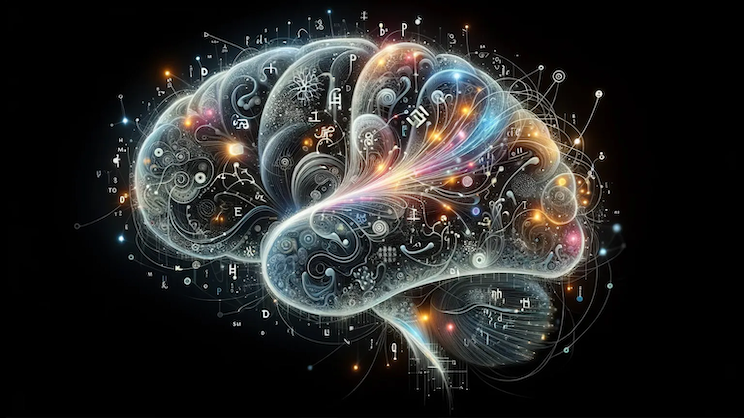John Hopfield and Geoffrey Hinton have been awarded the 2024 Nobel Prize in Physics for their development of Artificial Neural Networks (ANN). ANN mimics the brain’s biological neural networks by recognizing patterns in extremely large datasets. Like memories on mescaline, the invention has led to profound insights into particle physics, material science and astrophysics.
While credit, loans, college, employment and mortgage applications are increasingly fed to AI, it's important to keep one particular factoid at the ready. ANN isn’t an algorithm. She’s a network. With weights on it. That someone, somewhere, is perpetually tinkering with including ANN herself who many believe within the next 5 years will re-design herself entirely at a speed with which humans cannot supersede. Ten at most. As e-commerce, social media and search take over our world, there may be one last chance at deliverance.
Why would a computer science breakthrough be awarded the Nobel Prize in physics? Three different subfields — biophysics, statistical physics, and computational physics — provide the answer.
The holy grail of biophysics asks how the brain actually works. Utilizing a mix of fats, salts, nerve cells, and glial cells, the brain ultimately relies upon electricity. As electrical signals travel through the brain, they traverse a network of neurons and synapses. When multiple neurons fire together, or are stimulated at the same time, connections between them are reinforced, grow stronger and more resilient.

AI generated image of the human brain via DALL-E
Chatbots, text generators, and pdf summarizers fill the internet with banal declarations of dubious veracity. However, where ANN excels is the physical systems applications, including: physics-based climate models, searching for particle tracks that can indicate novel particles in accelerator-colliders (including the Higgs boson); mapping the Milky Way in neutrinos from the IceCube detector at the south pole; identifying transiting exoplanet candidates that human-based search algorithms miss; even processing the data used to construct the Event Horizon Telescope’s first image of a black hole’s event horizon. Like the starship Enterprise, ANN can ”boldly go where no man has gone before.” But like Google’s Deepmind she seems to have one structural, if metaphysical flaw.
The initial inspiration for artificial neural networks came from biology, but soon other fields started to shape their development. These included logic, mathematics and physics. The physicist John Hopfield used ideas from physics to study a particular type of recurrent neural network, now called the Hopfield network. In particular, he studied their dynamics: What happens to the network over time?
Such dynamics are also important when information spreads through social networks. Everyone’s aware of memes going viral and echo chambers forming in online social networks. These are all collective phenomena that ultimately arise from simple information exchanges between people in the network.
Hopfield was a pioneer in using models from physics, especially those developed to study magnetism, to understand the dynamics of recurrent neural networks. Moreover, he demonstrates that ANN has a superhuman form of memory.
Enter Geoffrey Hinton. In the 1980s, Hinton, computational neurobiologist Terrence Sejnowski, and others extended Hopfield’s ideas to create a new class of models called Boltzmann machines. While Hopfield networks could store patterns and correct errors in patterns (like a spellchecker), Boltzmann machines could generate new patterns, thereby planting the seeds of the modern generative AI revolution.
Backpropagation is a key algorithm that makes it possible to select weights based on the performance of the network on a training dataset. First developed it 1974, it remained challenging to train ANN until the early 2000s when Hinton and his co-workers cleverly used Boltzmann machines to train multilayer networks. Pre-training the network + fine-tuning the algorithm were the first steps of deep learning and the AI revolution.
While Google Search was officially introduced on September 4, 1998, by Larry Page and Sergey Brin, you may recall it producing a hodgepodge, often erroneous array of links. In the past 26 years, the very network + algorithms unleashed by Hopfield and Hinton have grown omnipresent.
In June, Juliette Celin accompanied her 16-year old son Santiago Alzate to the 2024 USA Swimming Olympic trials. The meet served as the National Championships in swimming for the United States, and the qualifier for swimming at the 2024 Summer Olympics.
During a subsequent meet, Celin experienced a headache during the excitement, and as a precaution she and her husband went to Urgent Care thereafter. While the attending physician had diagnosed and was treating her for a garden-variety migraine, Celin was simultaneously googling not only her symptoms but also her recent medical history to which an AI Overview repetitively generated an algorithm called—Aneurysm.
However, not until Celin brought the AI Overview to the attending physicians’ attention did he direct her to an Emergency Room. Within the hour, she’d been transferred to Hoag Hospital in Orange County and diagnosed with a ruptured brain aneurysm, a life-threatening medical emergency that occurs when a blood vessel in the brain has burst and bleeds into the surrounding tissue. Emergency brain surgery ensued followed by several weeks in the ICU.
That she recovered, remarkably, with relatively few side effects, can be considered a miracle. Called the Godfathers of AI, it can fairly be said that physics pioneers’ Hopfield and Hinton’s Artificial Neural Network or ANN were the first responders.
For proffering “a unique learning ability that will surpass every species on the planet,” Celin, with a new lease on life, bears witness to this very contradiction. Her son has since received an invitation to swim with the Florida Gators; to improve upon his personal best in the 400 Meter IM; and to make the exquisitely human bid to go “Faster, Higher, Stronger” at the LA28 Summer Games.
Archives










